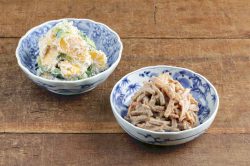Kagoshima University Student Serves Up Unused Fish at His Izakaya; Sashimi Dishes Include Suckerfish, Deep-fried Stingray
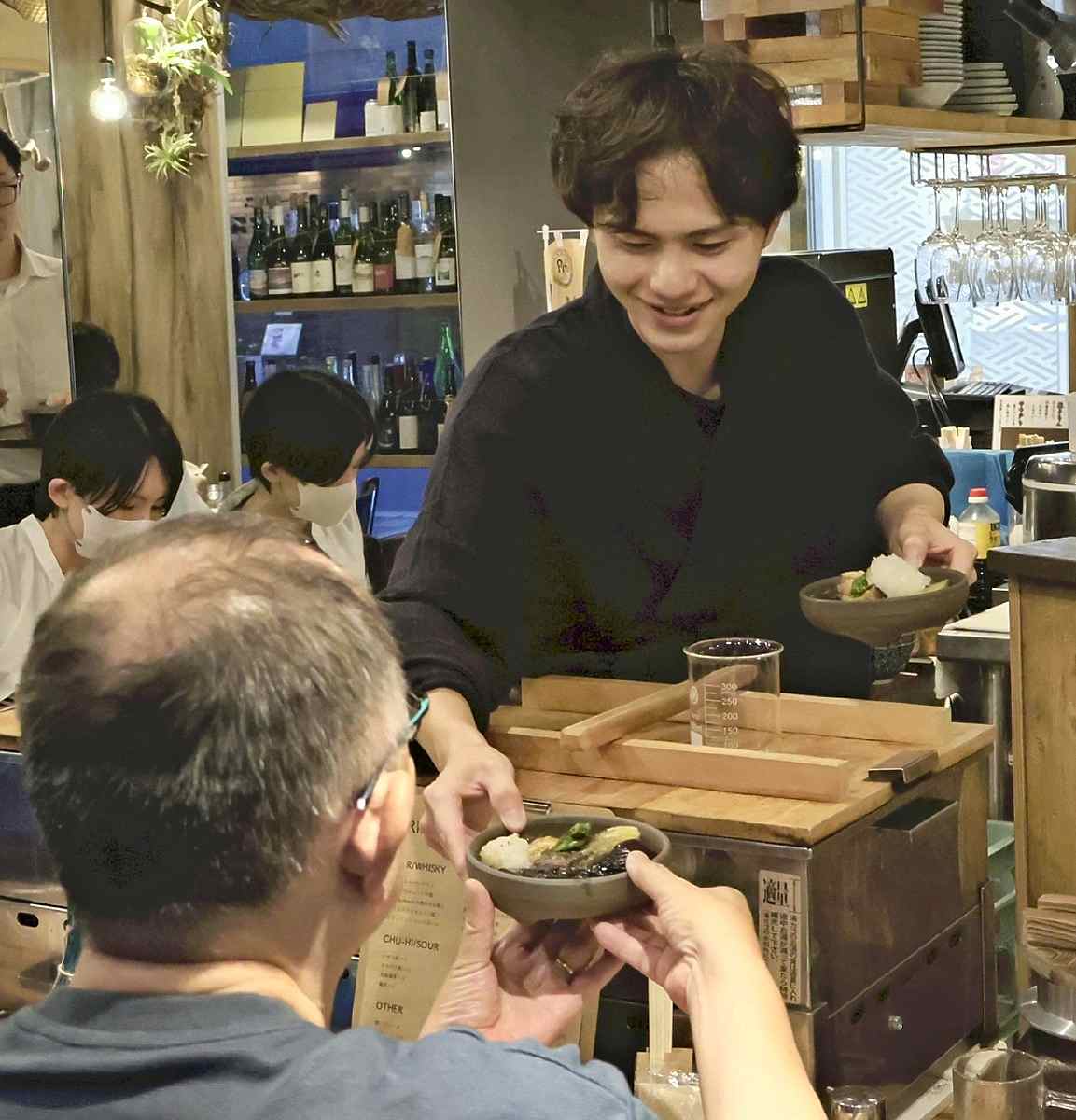
Kaisei Nishi serves a dish made with unused fish at his izakaya.
13:30 JST, September 22, 2024
KAGOSHIMA — Unused fish that are hard to sell due to their foul odor or poor appearance are getting a chance to be on the dinner table at an izakaya pub in Kagoshima.
Kaisei Nishi, 22, runs the izakaya and is a student at Kagoshima University Faculty of Fisheries. “I want people to know that some of the fish they tend to not want to eat are tasty,” he said.
On a mid-July evening, 13 customers were seated at the counter and tables to enjoy a meal at his seafood izakaya, Osakana Banzai.
Longfin batfish and double-spotted queenfish were the most eye-catching among the six dishes served that day.
Caught off the coast of Kagoshima Prefecture, some longfin batfish have a foul odor, and double-spotted queenfish have few edible parts. They are rarely served for these reasons.
Since cooking makes the odor of longfin batfish stronger, and makes the double-spotted queenfish’s flesh harder, Nishi serves them as sashimi.
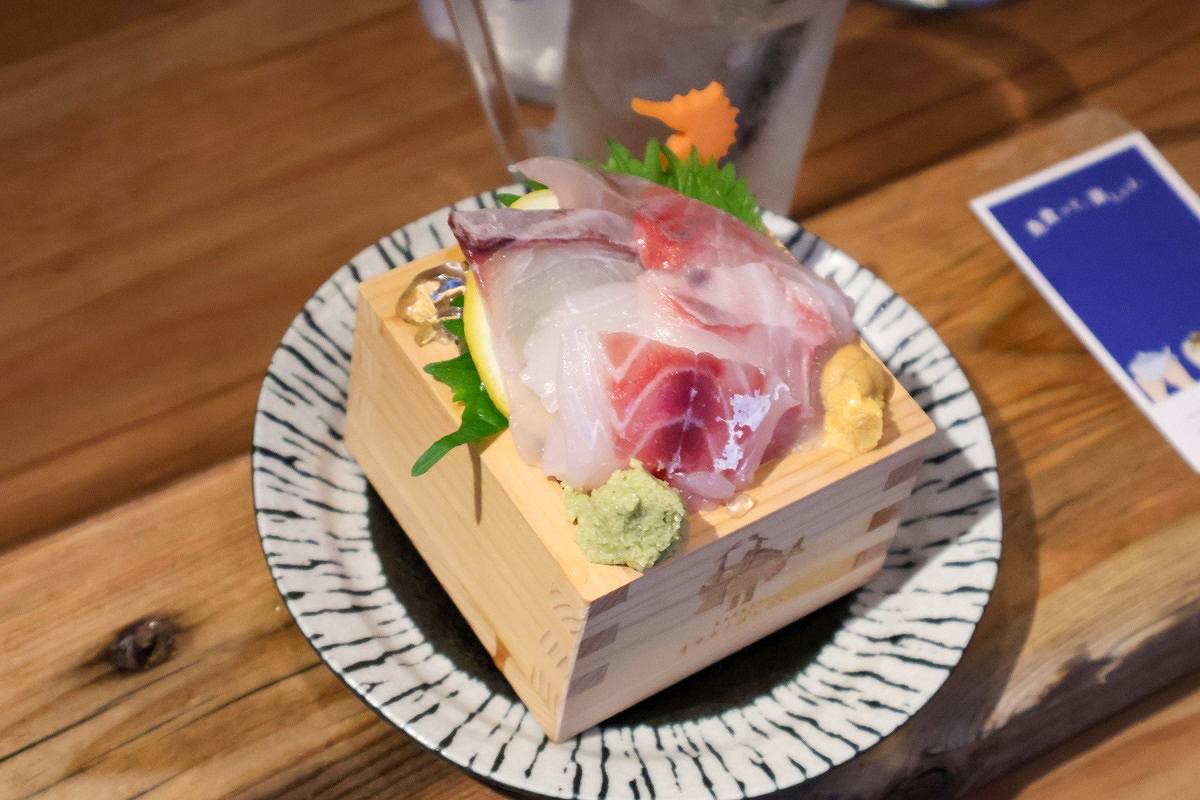
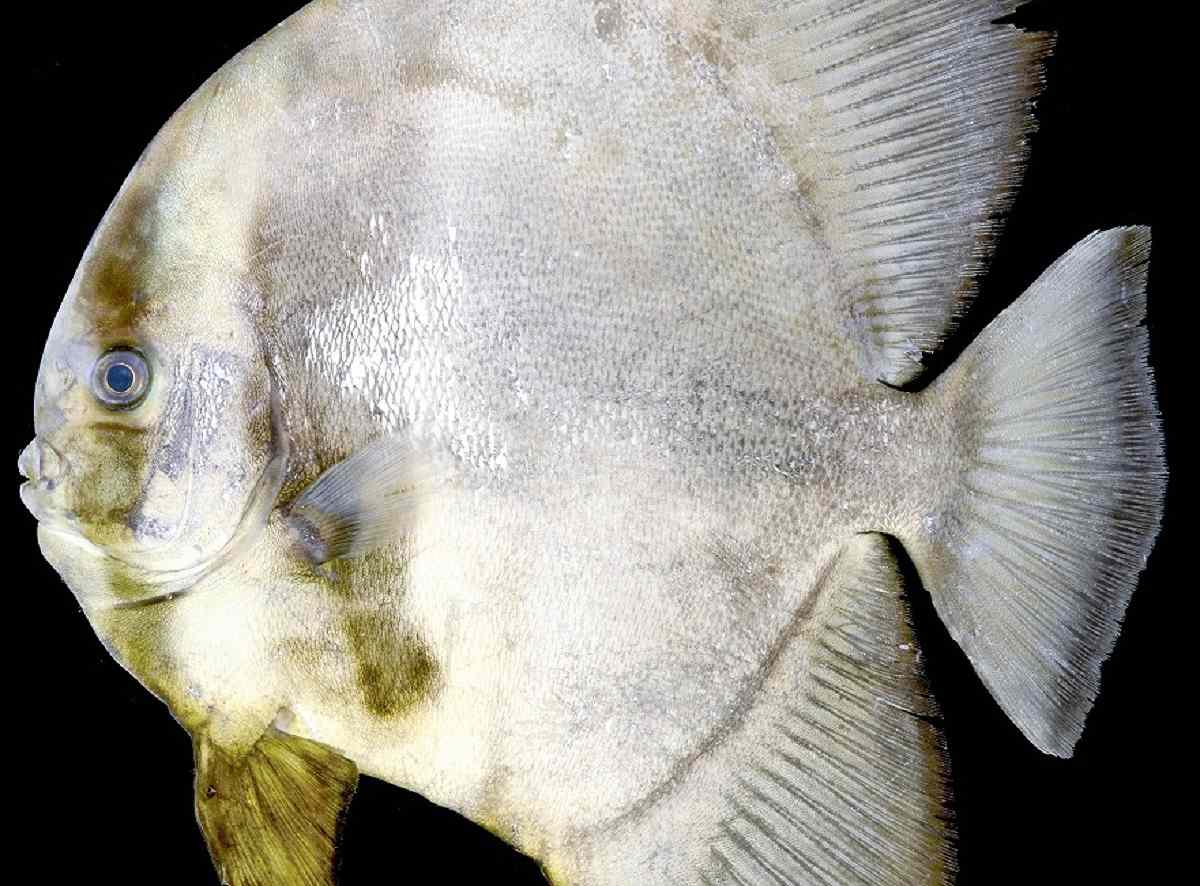
Above: Six kinds of sashimi, including double-spotted queenfish, suckerfish and longfin batfish, at Osakana Banzai in Kagoshima Bottom: A longfin batfish
“Longfin batfish is refreshing and easy to eat, and the double-spotted queenfish is delicious because they have just the right amount of fat,” said a 25-year-old nursery school teacher from Kamagaya, Chiba Prefecture, who visited the area on a family vacation.
Nishi is from Minami-Kyushu, Kagoshima Prefecture, and grew up in an area away from the ocean.
The ocean was a mysterious thing to him. From an early age, he found the diverse appearances of fish interesting and often read illustrated books on them, he said.
After entering university, Nishi started living alone and began to cut and trim fish.
When he ate surgeonfish — which is said to have a foul odor — as sashimi, he was astonished to find that the fish was tasty and full of fat. He has also eaten fish that are not commonly available and fish only available locally. Nishi said he has eaten about 300 kinds of fish so far.
The impetus for opening the izakaya came when he took a leave of absence from university in April last year for a project to travel around Japan in a camper.
Nishi was selected as a finalist to join the project, but ultimately did not win. With more free time on his hands, he decided to take the advice of an acquaintance and open a restaurant that served fish, which is his passion.
To prepare for opening the izakaya, he obtained fire prevention manager and food sanitation supervisor certifications. The izakaya opened in February this year, with Nishi borrowing his father’s izakaya for his establishment two days a week.
The decision to serve unused fish and use the term “banzai” in the name of the restaurant came about because he wanted to make people feel excited.
The menu includes photos and explanations of the fish to help customers learn about them. He makes the menu by himself each business day, as the menu items change depending on the fish he can get.
Nishi tries to offer dishes that customers can only get on a specific day, such as rabbitfish sashimi with grilled skin and deep-fried stingray.
“It is worthwhile to let people know that there are fish not available on the market. Offering unused fish is also a great benefit in terms of income for fishermen,” said Takuya Yanagigawa, 40, a fisherman from Kimotsuki in the prefecture who sells his fish to the izakaya.
Currently, Nishi mainly uses fish from the prefecture, but would like to offer fish from all over Japan in the future, he said.
“People tend to think that fish is difficult to cook and see it as a hurdle to overcome, but I would be happy if the number of people who are interested in fish increases, even if only a little,” he said.
Nishi plans to go back to school next April but will continue to run the restaurant.
Osakana Banzai only serves a ¥3,800 six-course meal. Reservations are required. The restaurant is open from 6 p.m. to 8 p.m. and from 8:30 p.m. to 10:30 p.m. on Sundays and Mondays. Reservations are accepted through the restaurant’s Instagram account.
30% of catch discarded
Japan’s annual fish catch, including aquaculture, peaked in 1984 at about 12.82 million tons. However, it decreased to about a preliminary 3.72 million tons in 2023. This number is the lowest since 1951, when statistics were made available, according to the Agriculture, Forestry and Fisheries Ministry.
The decline is attributed to Japan withdrawing from deep-sea fishing as countries have established exclusive economic zones. Environmental deterioration of fishing grounds is another reason.
According to the State of World Fisheries and Aquaculture 2020 report from the Food and Agriculture Organization of the United Nations, 30% to 35% of catch are discarded in most parts of the world.
"Features" POPULAR ARTICLE
-

Sanrio to Open Museum in Yamanashi Pref. Dedicated to Founder, Exhibits Include Hello Kitty, Other Characters
-

Autumn Foliage Surrounds Visitors to Tokyo’s Showa Kinen Park
-

My Daughter No Longer Speaks to Me, But I Want to See Her and My Grandchild
-

Kumamoto: Public Bath Refurbished as Library Where You Can Chat, Take Photos
-
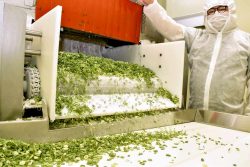
Frozen Vegetables: Demand Rises for Convenient, Tasty Domestic Produce
JN ACCESS RANKING
-

Tokyo Economic Security Forum to Hold Inaugural Meeting Amid Tense Global Environment
-

Keidanren Chairman Yoshinobu Tsutsui Visits Kashiwazaki-Kariwa Nuclear Power Plant; Inspects New Emergency Safety System
-

Imports of Rare Earths from China Facing Delays, May Be Caused by Deterioration of Japan-China Relations
-

University of Tokyo Professor Discusses Japanese Economic Security in Interview Ahead of Forum
-

Japan Pulls out of Vietnam Nuclear Project, Complicating Hanoi’s Power Plans



